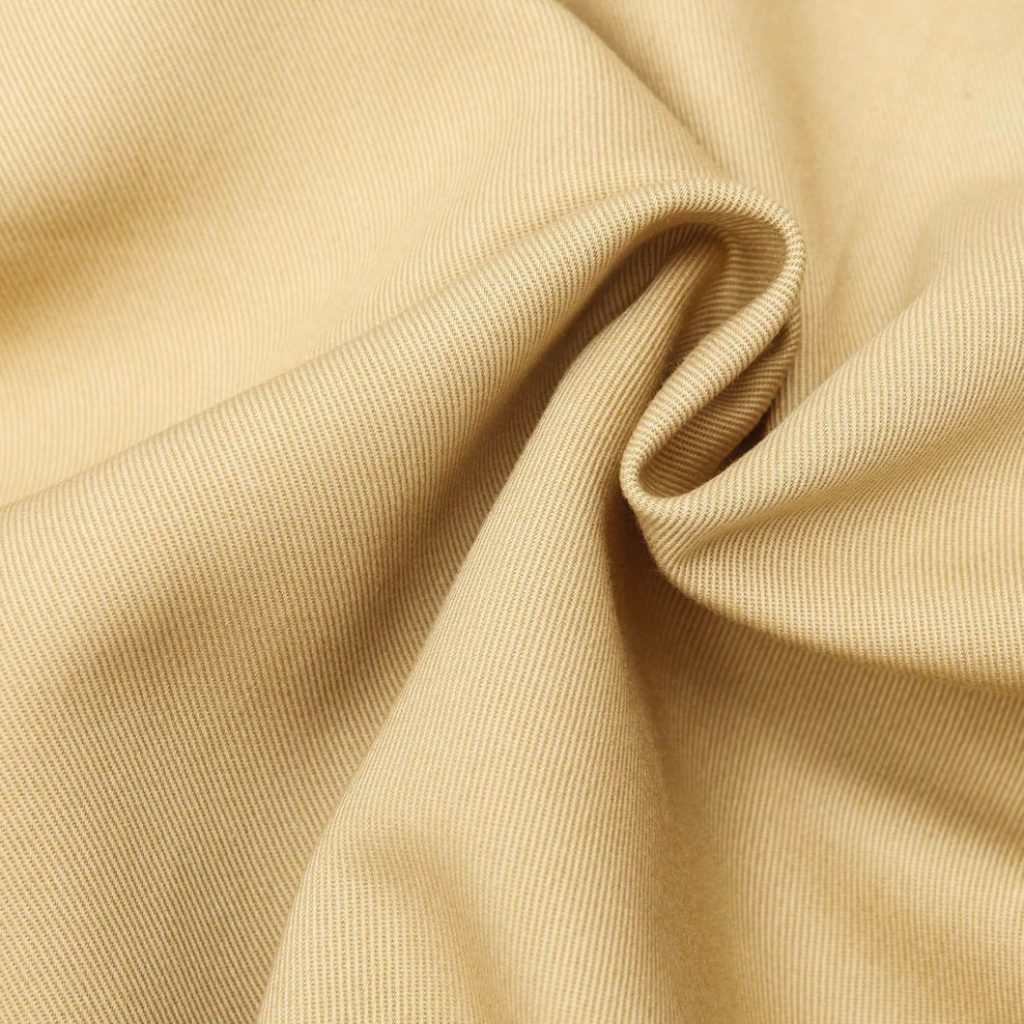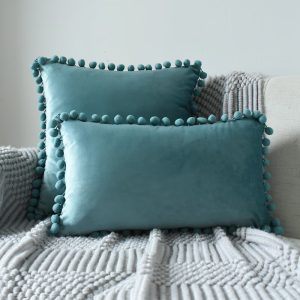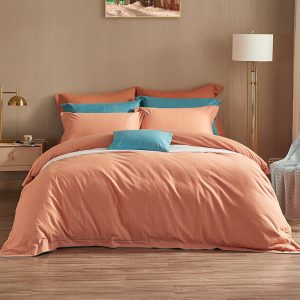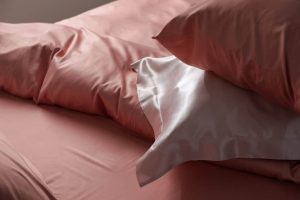Transforming a bedroom into a sanctuary requires more than mere utility; it demands a fusion of visual storytelling and tactile luxury. Contemporary artistic bedding collections have transcended traditional functions, serving as the focal point of interior design. Discerning homeowners now treat the bed as a large-scale canvas, utilizing duvet covers, pillowcases, and sheets to express personal style, from abstract modernism to biophilic serenity. In 2025, the emphasis shifts towards sustainable luxury, where high-quality organic materials meet curated, gallery-worthy prints. The following table highlights the core elements that define high-end artistic bedding:
| Design Element | Artistic Characteristic | Psychological Impact |
|---|---|---|
| Color Palette | Moody hues, Earth tones, Pattern Drenching | Grounding, Emotional Depth, Serenity |
| Texture | Tufted Boho, Washed Linen, Silk Sheen | Tactile Comfort, Sensory Engagement |
| Motif | Geometric, Botanical, Masterpiece Reproductions | Intellectual Stimulation, Nature Connection |
The Canvas: Selecting the Perfect Fabric
Before diving into visual styles, one must establish the foundation. In artistic bedding, the fabric is not merely a carrier of dye but an integral part of the sensory experience. High-quality materials ensure that the intricate prints remain vibrant and that the tactile experience matches the visual appeal. Only fabrics that offer breathability, durability, and superior hand-feel make the cut for luxury artistic collections.
Egyptian Cotton and Percale: The Crisp Classic

Egyptian cotton remains the gold standard for those seeking a crisp, gallery-white background for high-definition prints. Its extra-long staple fibers produce a smoother surface, allowing for finer detail in printed artistic bedding designs. A percale weave offers a matte finish and a cool, crisp feel, ideal for intricate graphic designs or watercolor motifs that require a steady, non-reflective surface to shine.
French Flax Linen: Textural Depth
For styles that rely on depth and a lived-in aesthetic, French flax linen is unmatched. Its natural slubs and slight irregularities add a dimensional quality to solid colors and simple patterns. Linen is particularly suited for “wabi-sabi” inspired collections or earthy, organic themes where the fabric’s texture contributes to the artistic narrative. It is highly breathable and softens with every wash, embodying a philosophy of evolving beauty.
Bamboo and Tencel Lyocell: The Silky Drape

Bamboo and Tencel (Lyocell) are celebrated for their silky drape and ability to hold deep, saturated dyes. These semi-synthetic fibers, derived from wood pulp, offer a lustrous sheen that enhances the vibrancy of bold, maximalist prints. Their smooth surface is perfect for reproducing digital art or high-contrast geometric patterns, providing a luxurious, cooling touch that complements modern, sleek bedroom interiors.
Mulberry Silk: The Lustrous Masterpiece

Mulberry silk represents the pinnacle of indulgence. Beyond its beauty benefits for skin and hair, silk serves as a luminous medium for artistic expression. Light reflects off the fibers, giving printed images a dynamic, glowing quality. Silk is often reserved for limited-edition artistic duvet covers where the interplay of light and color is paramount, offering a shimmering aesthetic that cotton or linen cannot replicate.
Minimalist Textures and Monochromatic Art
The “Clean Girl” aesthetic and modern minimalism have influenced bedding trends to move beyond stark whiteness into the realm of “warm minimalism.” This style relies heavily on texture rather than loud prints. Artistic value is found in the subtlety of the weave—waffle knits, stone-washed finishes, and frayed edges. The palette revolves around oatmeal, sand, charcoal, and soft terracotta.
In these collections, the “art” is structural. A duvet cover might feature architectural stitching or pleating that catches the light, creating shadow play. This approach treats the bed as a sculpture, where the interplay of light and textile creates a calming, meditative visual experience suitable for decluttered, zen-inspired spaces.
Bohemian Eclecticism: Patterns and Earth Tones
Bohemian artistic bedding creates a narrative of travel, culture, and freedom. These collections are characterized by global motifs, such as paisley, mandala, and ikat designs. Unlike the restraint of minimalism, the Boho style embraces “more is more” through the layering of textures. Tufted chenille geometric shapes on a cotton base are a hallmark of this style, adding 3D tactile art to the bed surface.
The color story in 2025’s Bohemian trends leans towards “New Boho,” which swaps the chaotic brights of the past for grounded, earthy richness. Deep sage, rusty orange, mustard yellow, and indigo blue dominate. The artistic arrangement often involves mixing pillowcases with contrasting patterns—stripes with florals—unified by a consistent warm tonal palette.
Biophilic Bliss: Botanical and Floral Impressions
Biophilic design seeks to connect the indoor environment with the natural world. Artistic bedding in this category ranges from scientific botanical illustrations to lush, overgrown jungle prints. High-definition digital printing allows for photorealistic ferns, monstera leaves, and wildflowers to cascade across the duvet cover, effectively turning the bed into a garden.
Current trends favor “moody biophilia,” where florals are set against dark backgrounds like charcoal or midnight blue, creating a dramatic, romantic effect reminiscent of Dutch Still Life paintings. This style adds a sense of organic luxury and tranquility, using the psychology of green and nature motifs to promote restful sleep.
Abstract Modernism: Geometric and Painterly Designs
For the modern home, abstract artistic bedding acts as a large-format painting. Designs draw inspiration from mid-century modern art, featuring bold color blocks, sweeping brushstrokes, and asymmetrical geometric shapes. This style is perfect for adding a punch of color to a neutral bedroom without the commitment of painting walls.
Watercolor effects are particularly popular in this category, utilizing the bleeding edge of dye technology to create soft, cloud-like transitions of color on sateen or Tencel fabrics. The lack of rigid lines in painterly designs evokes a sense of fluidity and dreaminess, aligning perfectly with the function of a bedroom.
The Masterpiece Series: Classic Art Reproductions
A niche but vibrant segment of the market involves direct collaborations with museums or artists to reproduce famous works of art on bedding. Sleeping under Van Gogh’s Starry Night or Klimt’s The Kiss allows art lovers to immerse themselves literally in their favorite masterpieces. These collections require high-precision printing techniques to capture the impasto texture of oil paint or the delicate gold leaf details.
These duvet covers and sheets serve as conversation pieces and educational tools. They transform the bed into a gallery display. The key to styling this look is to keep the surrounding decor minimal, allowing the “masterpiece” bed to stand as the singular artistic statement in the room.
Celestial and Whimsical Narratives
Whimsy and wonder drive the celestial bedding trend. Motifs include constellations, phases of the moon, zodiac signs, and nebulas. Often executed in deep indigo, violet, and black with accents of gold or silver foil, these designs tap into the human fascination with the cosmos. This style is not just for children; sophisticated adult versions use subtle embroidery or metallic threads to map out star charts.
These collections often use velvet or high-sheen sateen to mimic the depth of the night sky. The artistic intent here is to create a “dreamscape,” blurring the lines between the sleeping world and the infinite universe, fostering a sense of awe and imagination before sleep.
Maximalist “Pattern Drenching” and Moody Hues
Maximalism has evolved into “Pattern Drenching,” a technique where the bedding pattern matches or heavily complements the wallpaper, curtains, and rugs. This immersive style wraps the sleeper in a cocoon of design. Artistic bedding for maximalists features dense, complex prints—often mixing leopard spots with baroque florals or toile de jouy.
The color palette is unapologetically bold: jewel tones like emerald green, sapphire blue, and ruby red are standard. The “art” lies in the curation of these clashing yet cohesive elements. It creates a cozy, den-like atmosphere that feels personal, collected, and historically rich, rejecting the sterility of modern showroom aesthetics.
Sustainable Artistry: Eco-Friendly Innovations
True artistry in 2025 extends to the ethics of production. The “Eco-Art” movement in bedding utilizes natural, plant-based dyes (such as indigo, madder root, and turmeric) to create soft, organic colors that synthetic dyes cannot replicate. These collections often feature hand-block printing or shibori dyeing techniques, ensuring that every pillowcase and sheet is unique.
Fabrics like organic cotton (GOTS certified) and hemp are preferred canvases. The aesthetic is raw, honest, and deeply connected to the earth. Consumers are increasingly drawn to the story behind the art—knowing that the “imperfections” in the print are evidence of human hands and natural processes rather than industrial flaws.
Preserving the Art: Care and Maintenance
Investing in artistic bedding requires a commitment to proper care to maintain the integrity of the prints and the quality of the fabric. Intense artistic prints, especially those on digital-printed cotton or silk, can fade if subjected to harsh chemicals.
To preserve these functional art pieces, wash bedding inside out to protect the print from abrasion. Use cold water and mild, pH-neutral detergents free of bleaching agents. Line drying is the most gentle method, preserving both the fiber strength and the color vibrancy. For luxury fabrics like linen and silk, avoiding high heat ensures the “canvas” remains smooth and lustrous for years to come.



